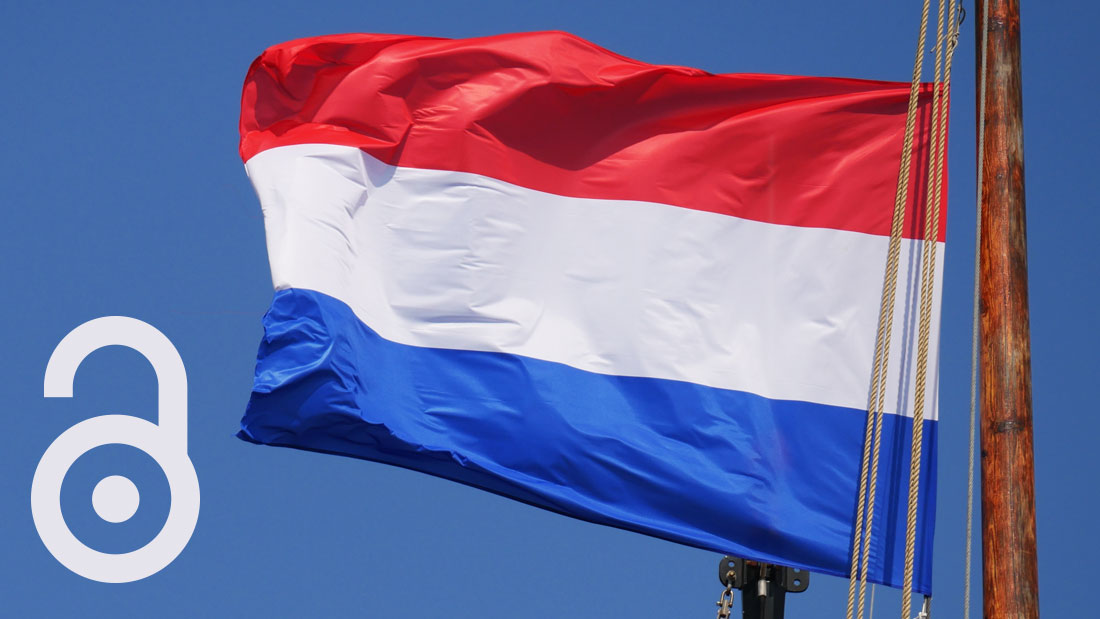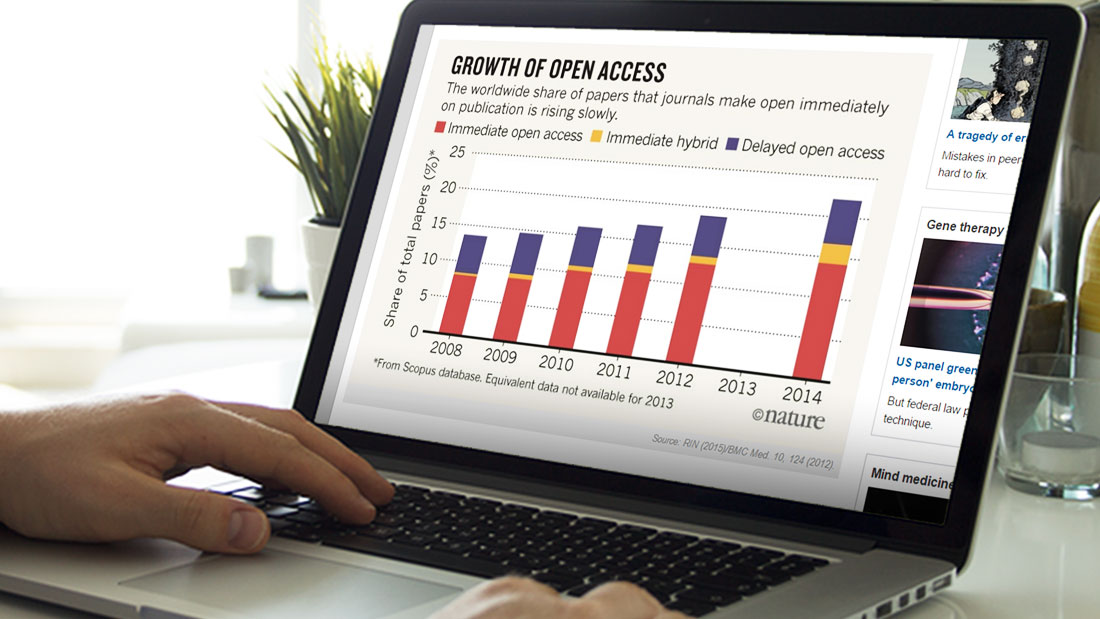
Open Access In The Dutch EU Presidency: A Historic Turning Point?
Open Science is one of the Dutch priorities for the EU Presidency in the first six months of 2016. In the focus are the optimal use of research data and especially a road map leading to 100 percent Open Access (OA) to scholarly publications in 2020.
by Anna Maria Höfler, Dr Willi Scholz, Olaf Siegert und Prof Tochtermann
There is no doubt that the Dutch government takes a leading position regarding the implementation of Open Access (OA) to scholarly publications in Europe. In November 2013 Sander Dekker, State Secretary for Education, Culture and Science of the Netherlands, outlined the plans of the government in a letter (PDF in Dutch) to the Dutch House of Representatives: 60 percent of Dutch academic publications shall be available through Open Access within five years (2018) and 100 percent within ten years (2024). And at the International Conference on Academic Publishing (APE) 2014 he made clear in a keynote speech that Gold Open Access (i. e. “…all publications in all journals are available free of charge from the outset. Embargoes become a thing of the past.”) is a key priority. He is, however, aware of the fact that the gold route is not the easiest one as publishers earn from subscriptions and embargoes, universities fear the expenses involved and even scientists themselves – predominantly at universities – may not see the urgency of Open Access as they can already access all types of scientific articles (via the existing journal subscriptions from their respective university library).
However, the Association of Universities in the Netherlands (VSNU) points out that Open Access does not only help (university) researchers, but also doctors, practitioners and patients to become aware of the latest insights into treatment options, companies to develop and apply innovations, scientists in developing countries to gain access to scientific knowledge, as well as teachers and pupils with lessons and assignments (e. g. through findings on didactics research).
Skip to PDF contentDekker therefore states “Let’s all join forces and go for gold together” – thereby emphasizing that all parties (publishers, universities, libraries, funding agencies and scientists themselves) have to be involved in the negotiation process. Lastly, in December 2015 Dutch Universities (with backing from the Dutch government) and Elsevier reached an agreement in principle on Open Access and subscription facilitating a transition of Dutch scientific output towards an Open Access publishing model. Whereas this arrangement is of a more general nature, another agreement that has been signed in December 2015 between the Dutch universities and Springer enables that all articles published by corresponding authors affiliated with a member institution will be published in open access free of charge for the author (i. e. no further Article Processing Charges). The agreement covers around 1500 journals within the Springer OpenChoice program. This is an example for the so called “offsetting model”. This can be seen as an interesting example how to deal with the uncontested market power of publishers by simultaneously opening the path for gold Open Access.
Very high growth rates needed
Now, the Dutch government has taken over the six-month rotating EU Presidency and is stating even more ambitious milestones for the European Research Area (ERA).
With strong support from the EU’s research commissioner Carlos Moedas, the Dutch EU Presidency outlined a road map that schedules a rate of close to 100 percent Open Access to scholarly publications of international publishers by 2020 with intermediate milestones for 2017 (30%), 2018 (60%) and 2019 (85%). In 2014, publishers worldwide made 17% of new papers available in an open access manner immediately on publication (gold route), up from 12% in 2011. Thus much higher growth rates are needed in the coming years to achieve the milestones proposed by the Dutch EU Presidency.

(Source: nature)
The Dutch EU Presidency’s agenda
The Dutch EU Presidency planned a series of discussions on the issue between European science ministers at the end of January 2016 and at an EU presidency Conference on Open Science in April 2016. At that forum, the European Commission (EC) is expected to launch an “Open Science Policy Platform” with a remit that includes investigating how subscription publishers can best transition to OA – in terms of open access to scientific articles and the optimal, responsible re-use of scientific data. For specific actions agreed by the EC and the member states an Open Science Agenda is being developed.
Despite these initiatives, it will be difficult to get all ERA members committed to the road map in 2016. Thus the Dutch Presidency is expecting a positive commitment by a group of frontrunners by July 2016 such that support by other stakeholders and countries could follow-up at later dates.
A historic turning point for Open Access?
There is no doubt that the Dutch have achieved great progress in implementing OA to scholarly publications in the Netherlands through the negotiations with Springer and Elsevier. However, the landscape in Europe is pretty fragmented. It will be extremely difficult to achieve the milestones leading to almost 100 percent OA in 2020.
In addition, measures to change the publishing system will succeed only with international support. For instance, Max Planck Society (MPG) brought up the possibility of a “large-scale transformation of the current corpus of scientific subscription journals to an open access business model” in a white paper. For realizing this goal MPG organized the “Berlin12Conference” in December 2015 which was attended by around 100 representatives of science organizations from 19 countries worldwide, among them Leibniz’ President Matthias Kleiner. The result of the conference was an expression of interest for establishing an “international initiative for the OA transformation of scholarly journals” in which the above-mentioned offsetting approach plays an important role.
However, some other nations, such as the United States, have not followed the Netherlands in urging the publishing industry to make more papers immediately OA. They have favored other routes to free-to-read papers, such as encouraging academics to archive their pre-publication manuscripts online, and mandating subscription publishers to make papers free after a certain embargo period (typically six months or a year after publication).
Still it has to be kept in mind what the Dutch already achieved in the past and that key proponents such as State Secretary Sander Dekker have excellent relations to successful Open Access initiatives. Furthermore Dekker has brought the topic of Open Access (in the context of Open Science) into science policy debates on a European level. With the Dutch Presidency this topic has gained even more attention so that the conditions for setting the ambitious goal of 100% Open Access by 2020 can be seen as a good foundation.
But still, it will be challenging…
View Comments

Snapchat: Aufmerksamkeit für Bibliotheken mit selbstzerstörenden Bildern?
Snapchat gehört aktuell zu den am stärksten wachsenden sozialen Netzwerken. Die App...



